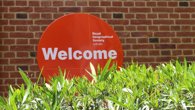The Unlocking the archives project was a major initiative undertaken by the Society from 2000-2004, funded by the Heritage Lottery Fund. Its three key aims were to:
- Conserve the Society's unparalleled collection of over two million maps, photographs, archives, publications and objects.
- Provide public access through the Foyle Reading Room, exhibition pavilion and online catalogues.
- Enhance the educational potential of the collection as a learning resource.
Before the opening of the new facilities provided through Unlocking the archives, the public could not access the Collections (beyond an existing historic public remit to provide access to the map collection) and the power of the Collections as an educational resource was entirely unrealised.
The major elements of the project included:
- The construction of the purpose-built Foyle Reading Room, as a space for researchers to consult materials from the Collections, and of two climate-controlled stores to house Collections items.
- The construction of a new entrance on Exhibition Road, to physically reorientate the Society towards new public audiences and connect with other cultural institutions, including the national museums housed at South Kensington.
- the construction of the Pavilion exhibition space, an opportunity for the Society to develop its own exhibition programme and also host relevant work developed by others.
- The digitisation of the Society's card catalogues into an (see our resource on the Society's Collections catalogues for more information).
Selected exhibitions hosted in the Pavilion include The Creative Compass; Cryptosphere; Hidden Histories of Exploration; Enduring Eye; and Everest through the lens. Many of these subsequently toured elsewhere in the UK and internationally.
Opening up the Collections to new audiences
A key aim of Unlocking the archives emphasised the importance of opening the Society and its Collections to previously underrepresented audiences, including community groups, particularly those from diaspora communities.
A major programme of work was the Crossing Continents, Connecting Communities series of projects, beginning in 2006 and running for three years. These were supported by the Heritage Lottery Fund, Esmee Fairbairn Foundation and John Lyon's Charity, with additional support from the Department for Children, Schools and Families for the Afghan strand. The programme aimed to increase access for communities to whom the Collections directly related.
The Society also wanted to draw wider public attention to the Collections, develop education activities and promote greater understanding of our shared geographies and histories. The programme created a series of exhibitions and educational resources around four geographical and cultural themes, each related to the Afghan, Chinese, East African and Punjabi communities in the UK.
A total of 20 community partner groups, with cultural ties to the four themes, took part in consultation workshops, providing personal reflections on the Collections which shaped the development and content of the exhibitions.
In addition to appearing in the Pavilion at the Society, the exhibitions toured regionally in the UK and internationally, accompanied by talks and showcase events of original Collections materials. Educational resources for schools drew on the exhibitions and materials.
Examples of other community engagement projects linked to Unlocking the archives include:
-
Emancipation 1838: led and curated by the Windrush Foundation, this project combined an exhibition at the Society with associated community group interpretation and orientation sessions drawing on materials from the Society's Jamaican collections (November-December 2013, funded by the Heritage Lottery Fund).
-
Exiles: 2012 marked the 40th anniversary of the expulsion of the Asian community from Uganda and resettlement in the UK. The Exiles project was a 14 month project led by the Council of Asian peoples, which explored the heritage of Ugandan Asians to mark this anniversary, celebrated the cultural contribution of the community, and created resources enabling audiences to learn about this under-reported aspect of London's heritage (September 2013, funded by the Heritage Lottery Fund).
-
The Goan Association (UK) was a two-year research study of the British-Goan community which arrived predominantly from East Africa by mid-twentieth century, drawing on video and audio interviews, and co-led by Clifford Pereira. (Funded by the Heritage Lottery Fund).
Find out more about community collaborations with the Society's Collections.
Artistic reinterpretation of the Collections
The Society has also developed partnerships to provide access for artists to review the Collections and create works that provide new interpretations of geography.
Examples include:
Achieving Designated Status for the Collections
Following the opening of the Unlocking the archives programme the Society was part of the first round of archives and libraries to successfully apply for Designated Status for its Collections.
As a result of achieving designated status, the Society was successful in its application to the Designation Development Fund for its project Rediscovering African Geographies in which the Society's cartographic, photographic and artefact collections relating to Africa were re-assessed and re-interpreted through partnerships with African diaspora communities.
The resulting exhibition was shown in the Exhibition Pavilion in April 2011. At the exhibition's heart were the records of African societies, cultures and landscapes, showing how this body of heritage informed national and international views of this continent and its people.
The exhibition was created with African community partners representing the Congo, Ghana, Nigeria, Namibia, Zimbabwe, Sierra Leone and South Africa.

